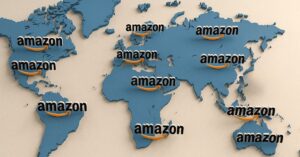
A strong user-generated content plan focuses on authentic emotion, quick hooks, and constant testing to improve conversions across your funnel.
User-generated content isn’t just filling social media feeds, it’s shaping buying decisions.
With 79% of shoppers saying UGC strongly impacts their purchases, and with nearly 10 times the influence of influencer content, the question is: why isn’t it part of your funnel strategy?
The New Funnel - A Four-Stage Journey Driven by UGC
Business.com"Recent research shows 93% of marketers say user-generated content outperforms branded content, driving 29% more web conversions."
According to G2 Learn Hub, B2B marketing is facing a trust crisis. Buyers are tuning out brand-generated ebooks and webinars, preferring peer-shared proof over polished pitches.
Instead of passively entering brand-led funnels, today’s buyers are actively investigating solutions. They browse Reddit, check G2 reviews, and watch unfiltered LinkedIn content, seeking evidence that a product works before engaging with sales teams.
The G2 Buyer Behavior Report shows that 92% of B2B consumers trust peer recommendations over traditional advertising. This shift has created a self-directed, cyclical buyer journey where UGC plays a decisive role in every stage.
The Four Stages Where UGC Matters Most:
- Problem Validation and Community Consensus
Buyers start by confirming their problem is real through communities like Reddit and Quora. This builds confidence in moving toward solutions.
- Independent Research
Shortened research cycles rely heavily on UGC from review sites, AI searches, and social platforms. Buyers often narrow their shortlist to two or three vendors before making contact.
- The Human Check
Video testimonials, peer-led webinars, and backchannel conversations provide final validation, reducing professional and personal risk for the buyer.
- Internal Advocacy and Stakeholder Alignment
Decision champions use UGC to persuade internal teams, with departmental leaders and end-users increasingly holding decision-making power.
In this new funnel, sellers must understand that UGC isn’t a marketing extra—it’s a primary decision driver. Without it, brands risk being eliminated before they ever join the conversation.
From Noise to Conversion, A New Approach to UGC
Imagine two brands selling a similar product. One invests heavily in polished, studio-shot ads. The other uses a mix of simple videos made by actual customers, strategically placed on its product pages, social ads, and emails.
The second brand will likely outperform the first, as shoppers find real customer content far more persuasive. This isn’t luck; it’s the result of a deliberate plan.
If your content strategy feels more like the first brand’s, it’s time to consider if a user-generated content plan is the missing piece in your own marketing funnel.
Many brands mistakenly focus on polished aesthetics and impressive view counts instead of genuine emotional connections, as discussed in the “Why Your User-Generated Content Isn’t Converting” episode of The Ecommerce Coffee Break Podcast. A high-production video may look good, but it will not drive sales if it does not resonate with the audience.
The problem stems from a flawed approach to creator management, where brands either provide rigid scripts or grant too much freedom. Neither method works, as one stifles authenticity while the other lacks strategic direction.
A Three-Part Solution for Effective UGC
To turn views into sales, brands should adopt a systematic approach centered on three key factors. This strategy moves away from gambling on content and toward building a predictable conversion system.
- A Strong First-Frame Hook
With consumer attention spans shrinking, the first two seconds of a video are the most critical. If the content does not immediately grab the viewer, they will scroll away.
- An Emotional Connection
Authenticity consistently outperforms polish because consumers need to feel a connection to the product. How a product looks is less important than how it makes the potential buyer feel.
- A Commitment to Testing
Brands should constantly test different video hooks, calls-to-action, and content styles. By analyzing the results, they can identify what works and invest more in those successful strategies.
Tailoring Content for Different Platforms
Finally, it’s important to recognize that not all content performs equally across different social media platforms. The style that succeeds on one network may fail on another.
For example, raw, FaceTime-style videos tend to perform best on TikTok’s platform. In contrast, audiences on Meta platforms like Facebook and Instagram often respond better to slightly more polished hooks and presentations.
The Rise of Creator-Generated Content as a Controlled UGC Strategy
Another related trend is gaining traction – creator-generated content (CGC). According to Digiday, CGC is emerging as a strategic alternative for brands seeking greater control over influencer-style content.
CGC is commissioned by brands but designed to replicate the lo-fi authenticity of influencer content. Unlike traditional UGC, it is created to brand specifications and published on the brand’s owned channels, allowing full control over placement, longevity, and performance tracking.
Key Characteristics of CGC:
- Content is brand-owned and can be reused indefinitely.
- Creators are hired for their production skills, not necessarily their audience reach.
- The style mimics influencer content but is distributed by the brand, not the creator.
- Pricing models vary from flat rates to retainers, with costs tied to deliverables and creator expertise.
This approach appeals to brands aiming to maximize influencer marketing budgets without the cost of full production crews. It also enables them to integrate creator-led visuals into multiple touchpoints, from social media to in-store displays and even billboards.
Marketers are increasingly treating CGC as a performance-driven channel for the full marketing funnel. By combining the authenticity of creator work with the brand’s control over distribution, CGC bridges the gap between influencer marketing and traditional advertising.
User-Generated Content Plan Powers Every Stage of the Marketing Funnel
UGC is more than a branding trend; it’s a versatile tool that can strengthen every stage of the marketing funnel. By strategically incorporating authentic customer-created content, brands can build credibility, engage audiences, and accelerate purchase decisions.
At the top of the funnel, UGC focuses on awareness and attraction. Brands can:
- Incentivize content creation through contests, giveaways, or discounts.
- Showcase a wide range of user content highlighting various brand or product features.
- Prioritize authenticity to ensure the content is relatable and credible.
For example, a travel company can feature real customer trip photos and videos to spark interest and inspire others to explore.
In the middle of the funnel, the priority shifts to consideration and education. Strategies include:
- Displaying user reviews and testimonials to build trust.
- Highlighting user-created tutorials and guides that explain product use.
- Featuring user comparisons against competitors to spotlight unique benefits.
A software brand might, for instance, present customer-made video guides that show how intuitive and functional their platform is.
At the bottom of the funnel, UGC works to secure the final purchase decision. This can be done by:
- Featuring customer success stories and case studies.
- Pairing UGC with strong calls to action that direct buyers toward the checkout.
- Offering exclusive promotions alongside UGC to encourage immediate action.
A clothing retailer might publish customer outfit photos to inspire purchase-ready shoppers.
When applied thoughtfully, UGC supports every phase of the buyer’s journey, transforming casual browsers into loyal customers. Developing and executing a full-funnel strategy like this is where an expert Amazon agency can provide critical support.
9News"Up to 70 per cent of consumers avoid advertising and prefer to hear from experts or everyday people rather than influencers or celebrities."






